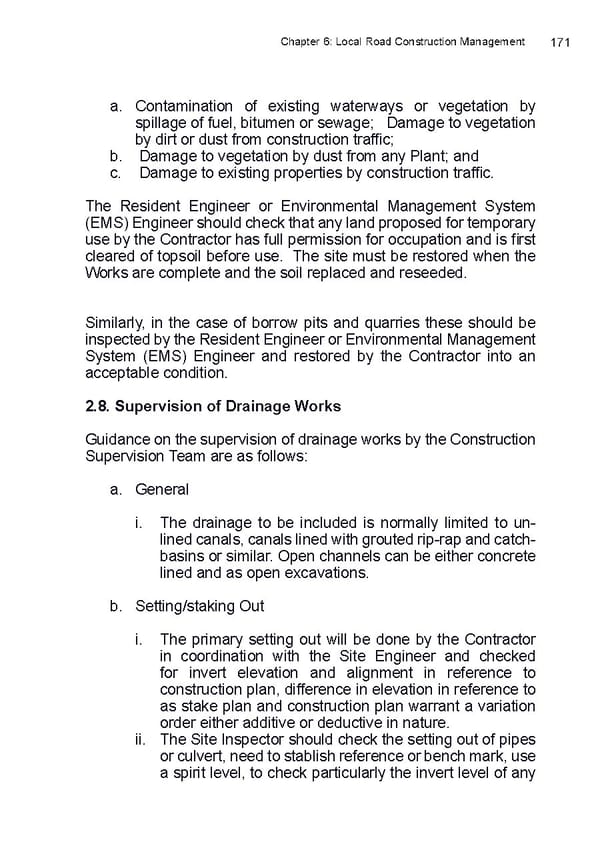Chapter 6: Local Road Construction Management 171 a. Contamination of existing waterways or vegetation by spillage of fuel, bitumen or sewage; Damage to vegetation by dirt or dust from construction traffic; b. Damage to vegetation by dust from any Plant; and c. Damage to existing properties by construction traffic. The Resident Engineer or Environmental Management System (EMS) Engineer should check that any land proposed for temporary use by the Contractor has full permission for occupation and is first cleared of topsoil before use. The site must be restored when the Works are complete and the soil replaced and reseeded. Similarly, in the case of borrow pits and quarries these should be inspected by the Resident Engineer or Environmental Management System (EMS) Engineer and restored by the Contractor into an acceptable condition. 2.8. Supervision of Drainage Works Guidance on the supervision of drainage works by the Construction Supervision Team are as follows: a. General i. The drainage to be included is normally limited to un- lined canals, canals lined with grouted rip-rap and catch- basins or similar. Open channels can be either concrete lined and as open excavations. b. Setting/staking Out i. The primary setting out will be done by the Contractor in coordination with the Site Engineer and checked for invert elevation and alignment in reference to construction plan, difference in elevation in reference to as stake plan and construction plan warrant a variation order either additive or deductive in nature. ii. The Site Inspector should check the setting out of pipes or culvert, need to stablish reference or bench mark, use a spirit level, to check particularly the invert level of any
 Local Road Management Manual Page 171 Page 173
Local Road Management Manual Page 171 Page 173